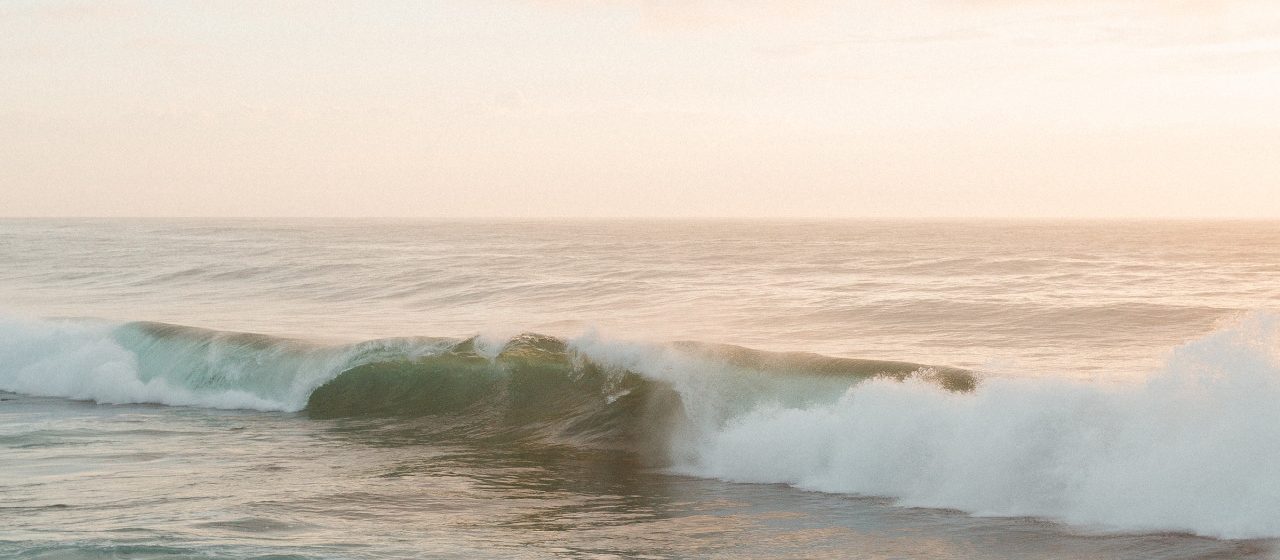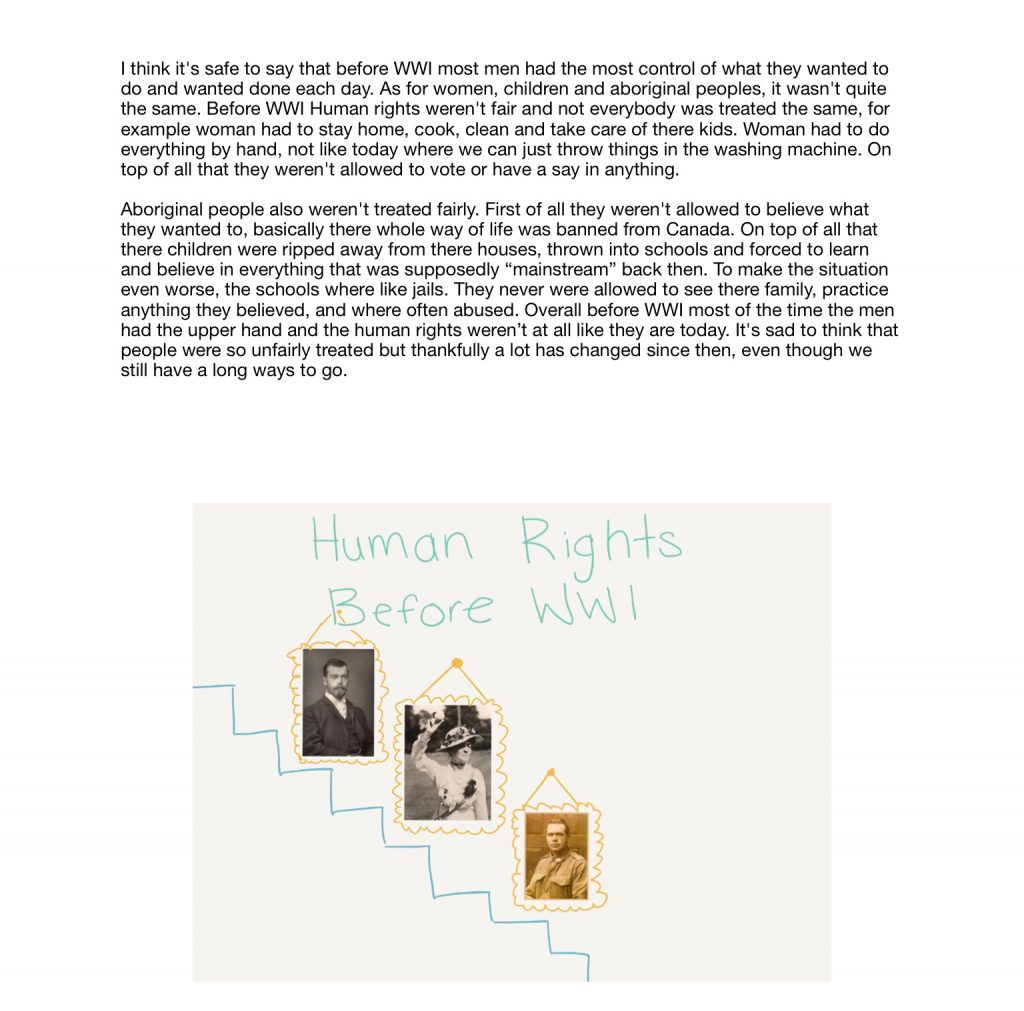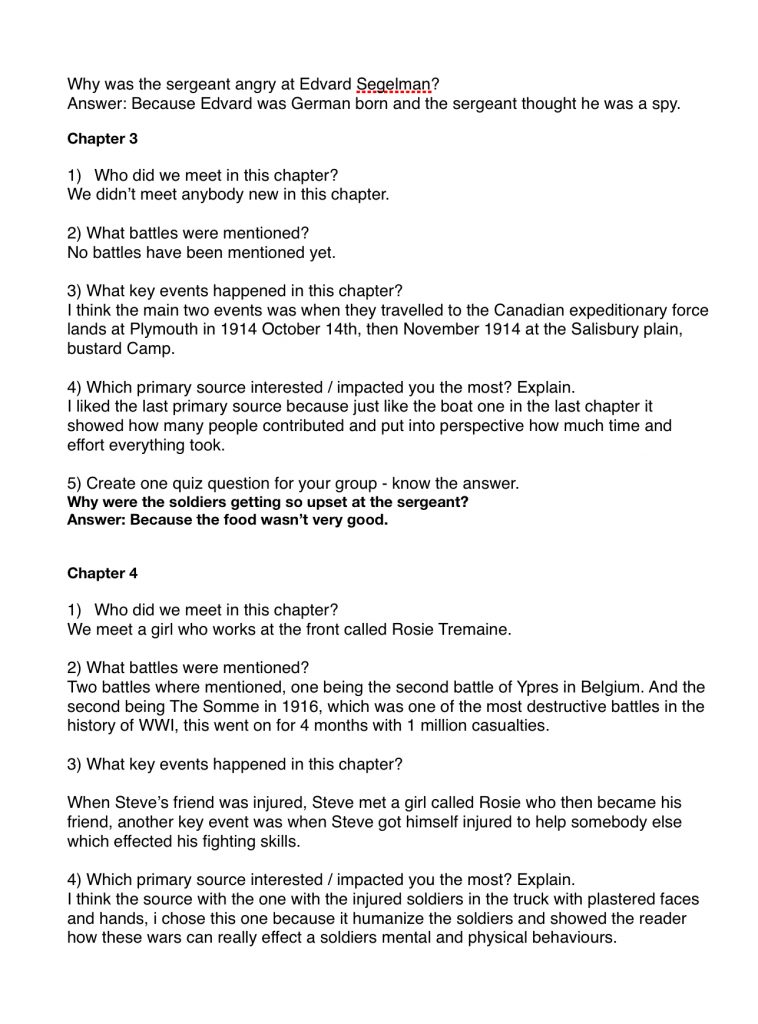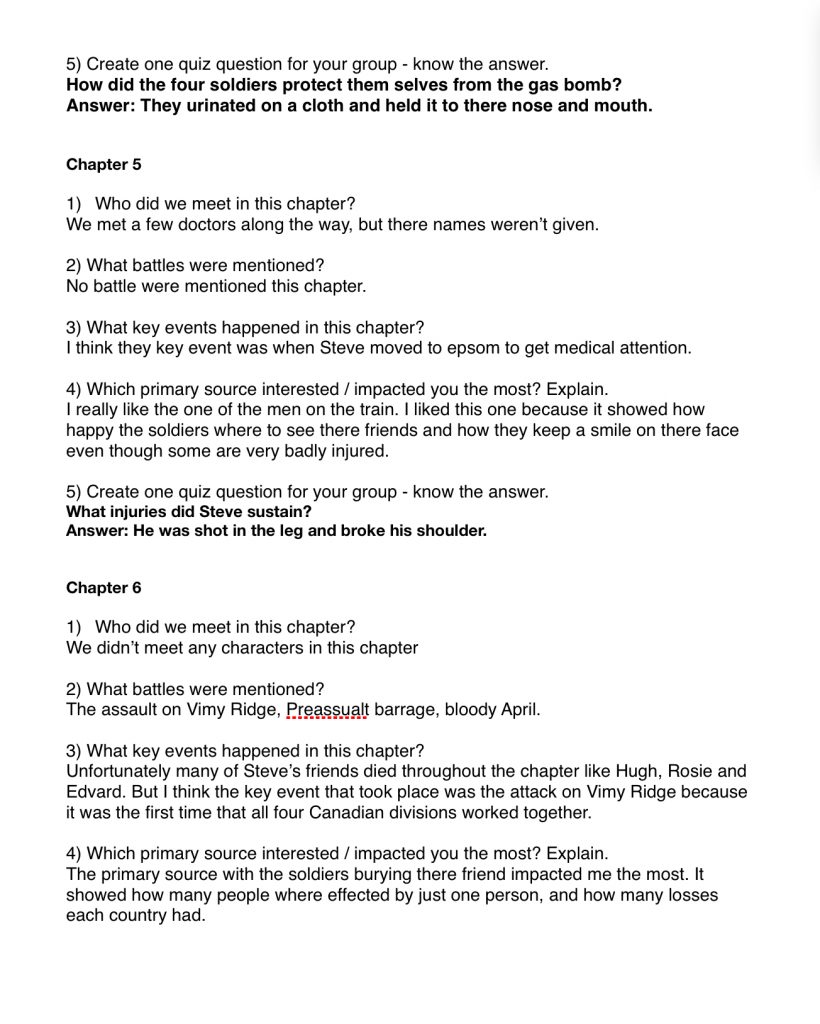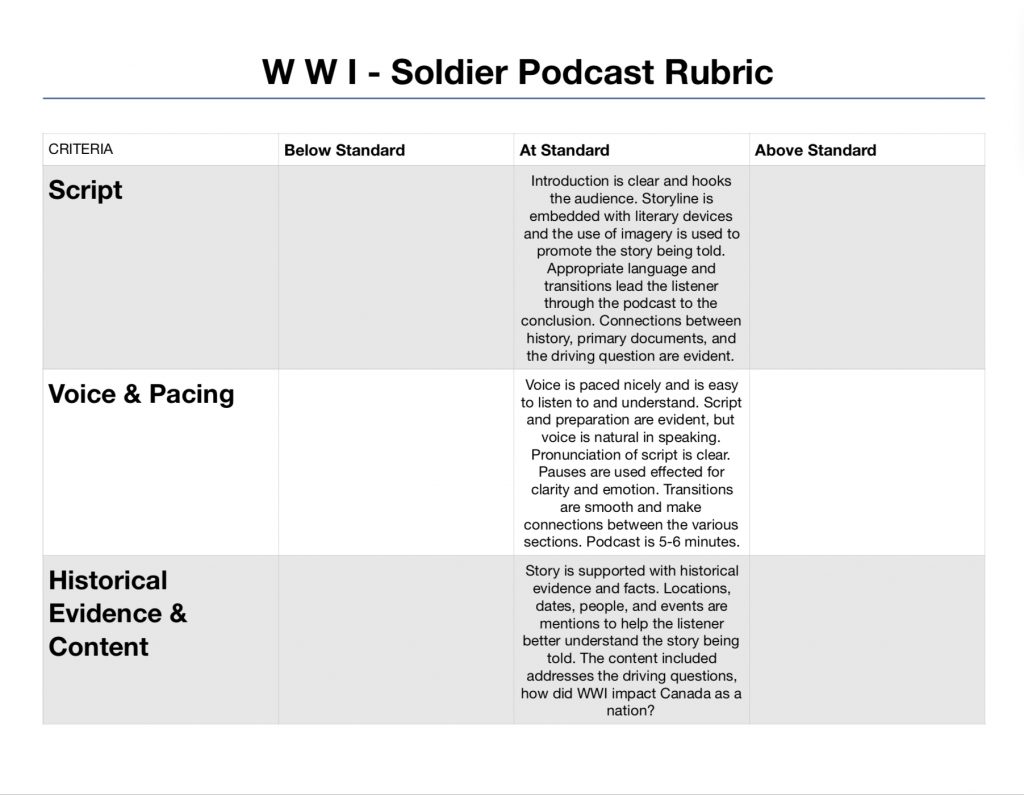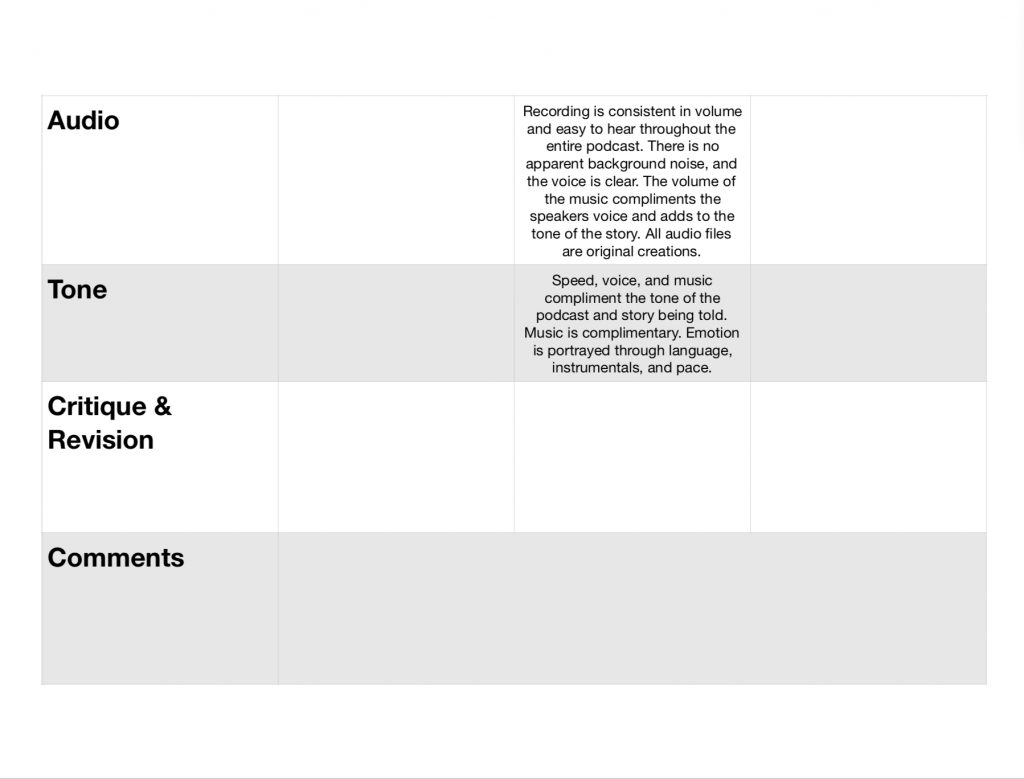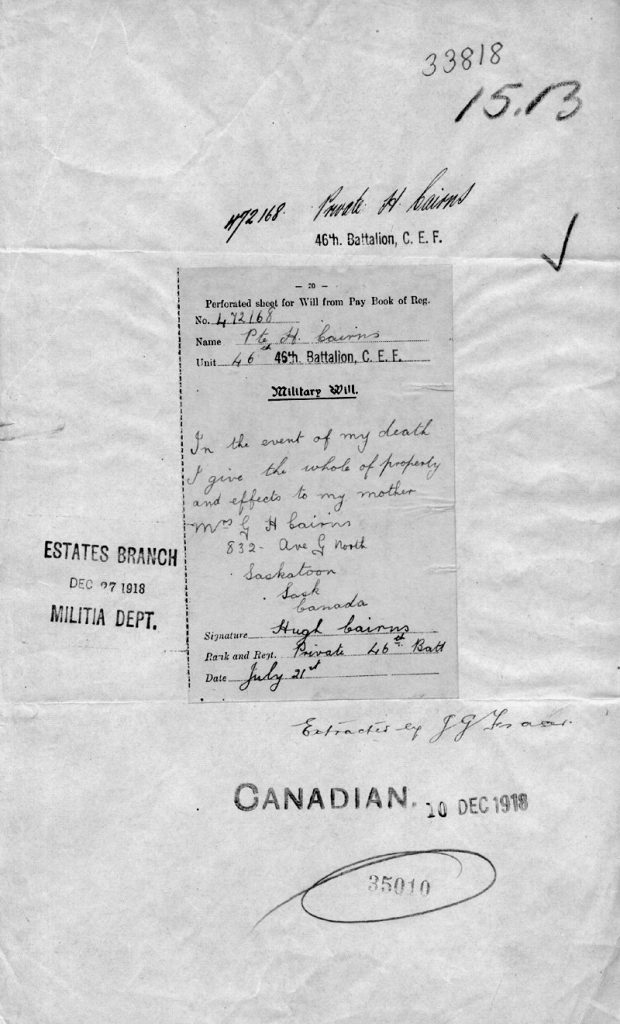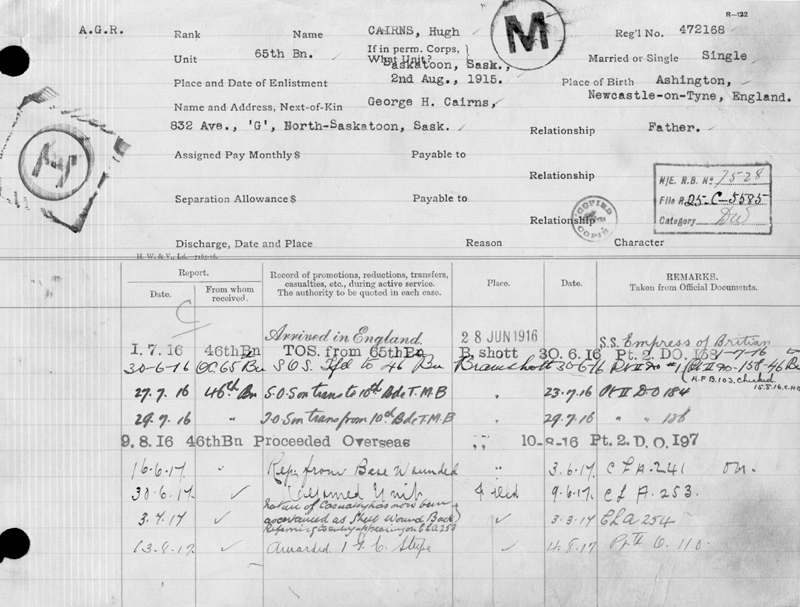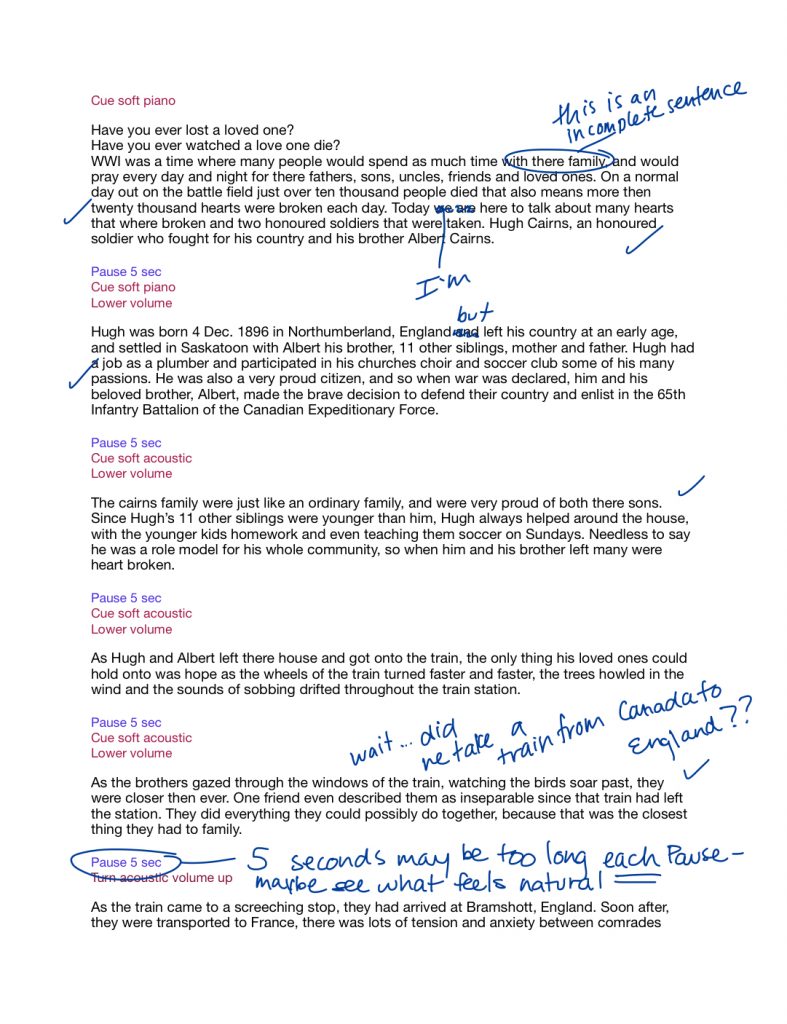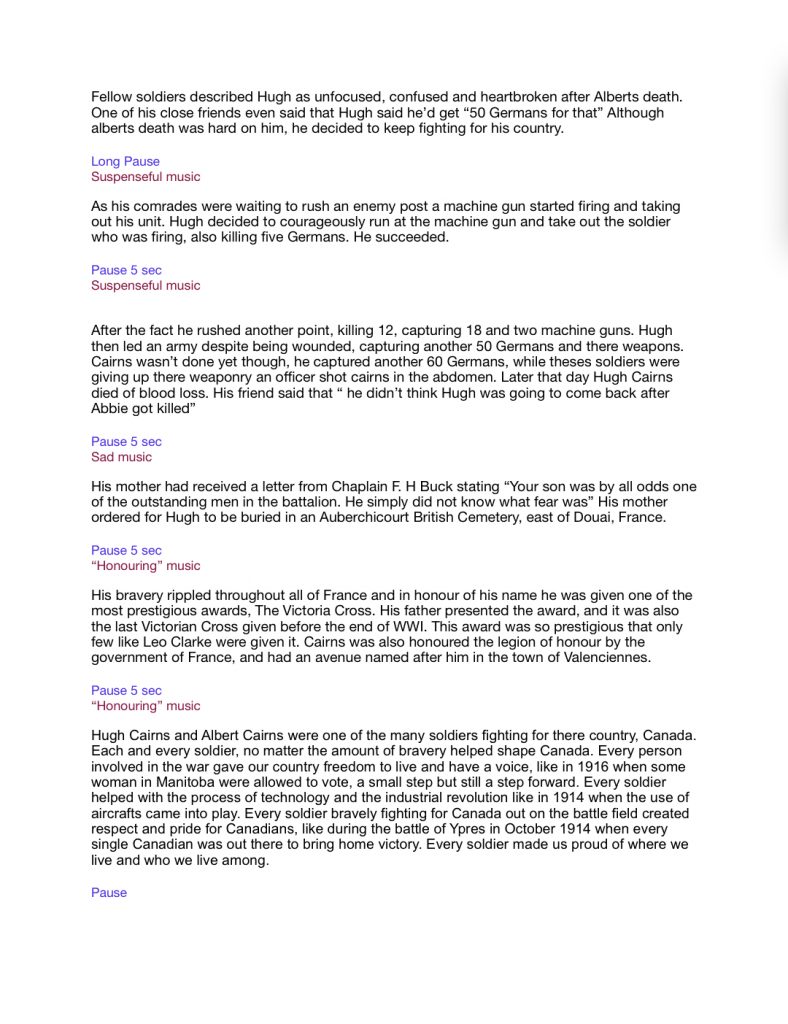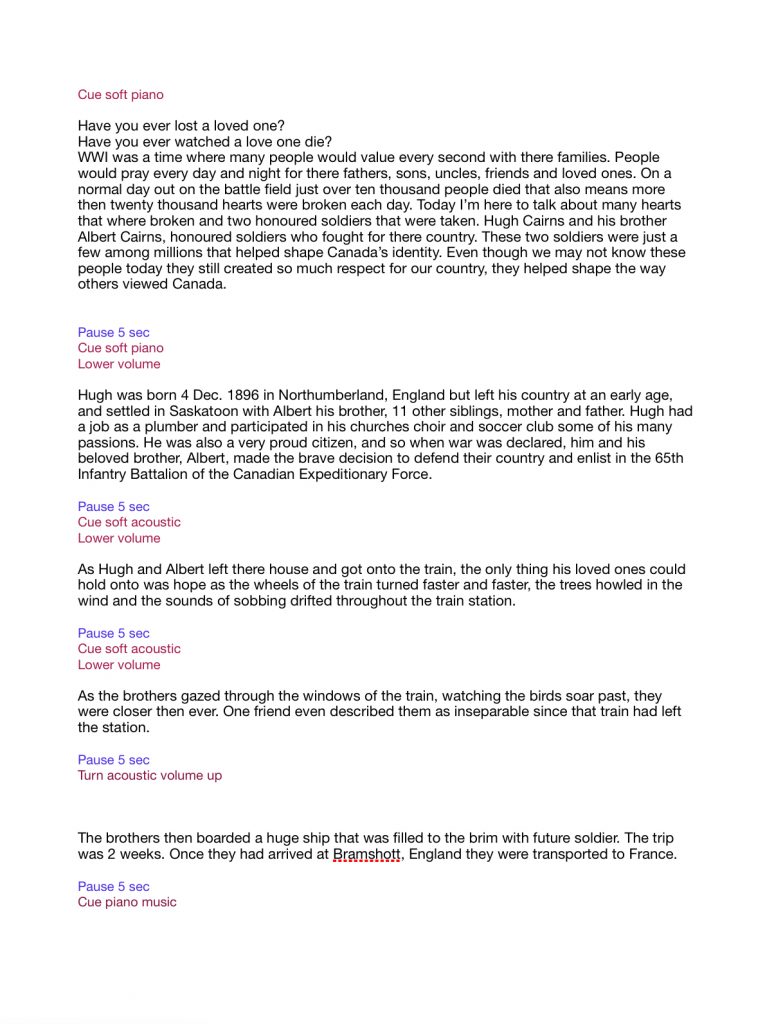Posted on October 23, 2017
All About WWI!
This post is going to be all about WWI, so find a quiet place and get comfortable cause this is gonna be a long one!
We are going to start way back to about the first week of September when we were introduced this unit. This first thing we started with was the Laurier Era. Laurier Era started in 1996, when the first French-Canadian prime minister was elected. This election spiralled into many events and laws being changed, some for the good like the “golden years” (economic boom) and some for the bad like the tension that was created between the English-Canadians and French-Canadians. Our mini project we had to complete to conclude this Era, was a little slideshow to summarize one topic out of these:
Then we had to share them with the class in a form of a keynote:
Before we got into everything about WWI and everything leading up to it we talked about a few other topics. The first topic was surrounded around human rights back then, and what they looked like. These human rights mostly focused on the minorities like aboriginals, asian immigrants and woman. Once we read a little section of all the minorities and what rights they had, we were told to pick one group of minorities and summarize what we learned in a paragraph. To add on top of that we created a visual to represent the paragraph. Here’s mine!
We also started talking about what Europe looked like before WWI, to do this we watched three videos. One video was about the assassination of Franz Ferdinand, and the others were about the alliances between countries and the Balkans. After watching these videos we were told to create little drawings to represent certain important events, here’s mine!
Okay, so now that we learned a little about what happened before the war we started learning about the events leading up to the war, and even what caused the war. This whole topic is super big and so many crazy theories of why WWI started were thrown into the mix, so to make things a little easier I just made a separate blog to talk about that. On top of that I talked about a project we did for that topic. Click here to see it!
After we learned about all the other countries and why they joined the war, it was time to drift towards why Canada joined the war. The bottom line is basically when Britain went to war against Germany, Canada was immediately fighting for Britain to. The only thing Canada could decide was the commitment, resources and men they would contribute, and Canada being the country it is contributed a lot of resources and energy towards this war. But now let’s talk about the Canadian soldiers, what was it like for them? How did they feel? What did the battlefront look like? All these questions were answered in a graphic novel, Shattered Ground. Shattered Ground basically followed a soldiers experiences in war and how he got there through his diary. Throughout the week we were assigned to read through the graphic novel and fill out a little chapter report, to discuss with the class. The book was really interesting and had a lot of really cool primary sources, like drawings, pictures and video from WWI. If you want to read the book click here, and here’s my chapter report if you interested in reading them at all:
Along the way of this whole WWI fiasco, we were given a few little assignments and learned about some battles, like the battle of Vimy Ridge, Le Somme and Ypres. But our main focus was this project we were assigned. The project was all about Canadian soldiers, there time served in war and the big question… How did WWI shape Canada’s identity as a nation? To start off this project we were given a link, this link led to the thousands and thousands of soldiers that gave there life to WWI. We were told to pick just one soldiers, with that soldier we told a story of there life and how they contributed to WWI and the driving question. In the end all this was going to be put in the form of a podcast, with our own music and everything.
The soldier I was going to be researching for the next month or so was Hugh Cairns. The website were I found Hugh actually had tons of primary sources (e.g. signed documents, wills and death certificates) I’ll screen shot a few and put them below:
Although this website gave me tons of info, I still needed more to complete my story so I did a little research. Turns out Hugh and his Brother were very well known soldiers! I found tons of info and little details about where the two grew up, there hobbies, family and friends. So make sure to listen to my podcast to learn more about the life led by Hugh Cairns!
Although the research took a while, the script was by far what I spent most of my time on. The teacher wanted the podcasts to be perfect but for that to happen we had to go through tons of pier critique. But before even starting the script we had to learn about what makes a good podcast/story. We also learned all about the hook of a story, and spent hours perfecting just the first sentence of this hook. Once we finished our script we went on to pier critiquing, and teacher critiquing.
This is what my story looked like before critique #1:
The teacher thought that we had to really focus on the driving question and how our soldier really contributed. So after a while spent brainstorming and editing I finally finished my final draft. Take a look!
 Before we started recording we had to learn about the apps we were going to use. We started to play around in garage band, and make some tracks. We also started to learn about what makes a good podcast. Since we didn’t want our first podcast being our big project, we practiced as a class and made one big podcast about the Halifax explosion (the biggest man made explosion before nuclear bombs)
Before we started recording we had to learn about the apps we were going to use. We started to play around in garage band, and make some tracks. We also started to learn about what makes a good podcast. Since we didn’t want our first podcast being our big project, we practiced as a class and made one big podcast about the Halifax explosion (the biggest man made explosion before nuclear bombs)
After listening to our class podcast, we started to realize that tone was super important. For one, tone sets the mood, tone can also be really handy to intrigue the audience with. Another important part to remember that we realized when making this podcast, is the music. The music can change the whole emotion and perspective of a podcast, but keep in mind it can also ruin your podcast. Music can sometimes be very distracting if its to loud or can be annoying if it goes on for to long. Those were only a few examples we learned about of how to make a great podcast!
I think for me the most challenging part was creating music. When I started making music I decided to just use one instrument, the cello. In the end, my attempt at a first draft ended up being way to annoying and just repeated itself throughout the whole six minutes. For my second draft I thought that I should maybe incorporate some other types of instruments to mix up the mood. I ended up making 3 different tracks, one was sad, the other was happy and the last was a neutral/moderate loop.
Once I recorded my first podcast, and it was critiqued the teacher decided to get us to just edit and redo the first 30 seconds. I found that it sounded a lot better because I was just focusing on a little sliver of it. So for my final draft I decided to really focus on each part and not just the podcast in whole. Once the recording was done, I went back to the music. I listened to every 20 second interval and decided if the mood was either happy, sad or neutral. This helped me figure out which loop of music I could put over the recording, which would help to enhance my points and tone.
Here’s my final drafts!
Draft 1-
30 seconds-
Final podcast-
In the end I was really happy with my podcast! I think the part that really helped me out was the making of the script. I think that going through it, and marking down every detail that needs to be said or done definitely helped me out in the long run. My whole story and conclusion were more organized which created more flow to my podcast. Overall I was really proud of my work!
